The Importance of Minimizing Air Leakage in Rotary Valves
It is important for processors to understand what can influence the potential for air leakage
November 22, 2021
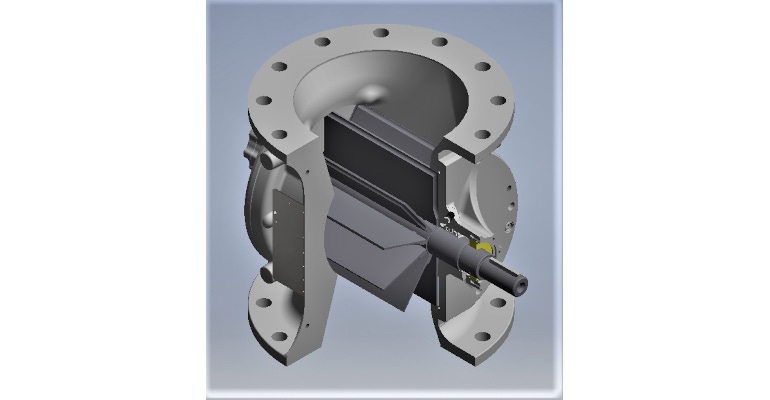
Matt Burt, director of sales – components, and Ron Van Ostenbridge, junior business development manager – components, Coperion K-Tron
A rotary valve is a device to meter product or act as a separation device for material in hoppers, separating pressure differential, or isolation device for NFPA 69 (the current standard on explosion prevention systems). Rotary valves are known by a variety of names such as airlocks, star valves, rotary feeders, and rotary airlocks. Figure 1 shows a cross-section of a rotary valve.
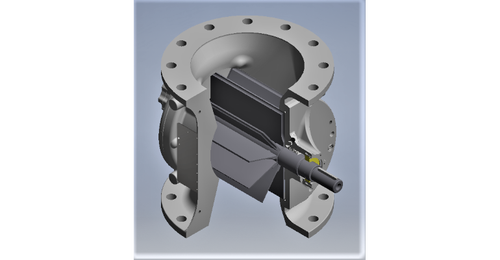

Figure 1: ZRD 250 quarter section and ZRD 250 half section
What is Leakage Gas?
All rotary valves leak air, and this leakage air needs to be managed. There are three types of leakage that should be considered. Radial leakage is the air that leaks between the tips of the rotor blades and the housing. Axial leakage is the leakage between the edges of the rotor blades and the end plates. Carryover leakage is the gas that is transferred via the empty rotor pocket back up to the inlet of the valve. Gas leakage at the inlet of the valve can impact the flow of material into the valve.
Impact of Bulk Material on Leakage Gas
Understanding the characteristics of the bulk material being fed is important in configuring the right rotary valve for any given application.
Flowability
If the material is sticky or adhesive, it may pack under pressure and not flow freely into the valve. Particle size and shape will affect how well material flows into the valve pockets and therefore the efficiency of the valve. There are materials that interlock or agglomerate which will decrease the pocket fill efficiency; this must be considered when sizing your valve.
Abrasiveness
How abrasive is the bulk material on the internal parts of the rotary valve? Abrasive materials will wear the rotor, housing, and end plates. The resulting gaps will make additional air leakage across the valve possible. Designing your valve to combat the wear might require special coatings such as chrome, tungsten carbide and ceramics.
Corrosion
If the material being fed is corrosive, you will need to consider the valve’s material of construction. Typically, valves are made of aluminum, carbon steel, or stainless steel. Choosing the correct material of construction is critical with corrosive bulk materials. One other consideration is the potential for the process vapors to cause corrosion. This will likely have more of an impact on seals than on the valve itself.
Temperature
Both the temperature of the environment and the temperature of the material need to be considered when configuring a rotary valve. If the material is hot, pay close attention to clearances to avoid contact between the rotor and housing due to thermal expansion. Temperature can also impact the type of seals.
Contamination
Could the materials of construction of the rotary valve or seals react with the material? For instance, some PVC compounds can become discolored if aluminum is used in the process equipment such as tubing or rotary valve housings/rotors. The conveying gas is typically ambient air or inert gas for example, N2. It is important that the seals be fed with clean, dry plant air. If not, the possibility of introducing moisture, dirt, or oil into the valve seals may damage or reduce their effectiveness.
Degradation
If the material is easily degraded, the wear exerted on it by the rotary valve could cause the product to be out of specification for producer or end user. Typically, this degradation is caused by the shearing or smearing of the material.
Hardness
If the material is hard and difficult to shear, this can cause severe loads on the rotor shaft or drive assembly. Typically, this can be remedied by using a heavier duty drive. However, caution should be taken as adding a heavier duty drive to the rotor we can run the risk of twisting of the rotor shaft. Selecting a valve with a rotor shaft that can handle the torque load is important. In addition, Mohs hardness is the first criteria for selecting wear protection, along with pressure differential.
Bulk Density
The bulk density of the material and how it is impacted by the pressure differential across the valve needs consideration. For example, materials that are easily fluidized--typically powders--may require an oversized valve to compensate for the loss in pocket fill efficiency when feeding into a pressure system.
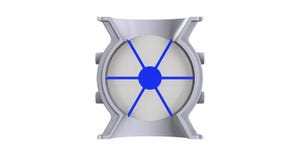
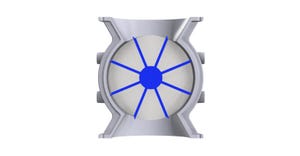
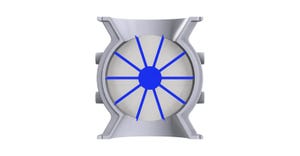
Figure 2: 6-blade, 8-blade, and 10-blade rotor configurations
Causes of Leakage Gas
All valves have set clearances between the rotor blades and the housing and/or end plates. The clearance varies depending on factors such as size, temperature, material, and service. Typically, the larger the valve, the more clearance, which equals more leakage gas volume.
The proper operating temperature is one of the most overlooked parameters. If the valve is designed for a higher temperature and run at a lower temperature, then the clearances will be much larger than necessary. Depending on the material’s properties there is the potential for the material itself to block up to half of the clearance which would reduce gas leakage.
Regardless of the size of the valve, the number of blades on the rotor impact the gas leakage of the valve. The illustration in Figure 2 shows various rotor configurations. At left is a six-blade rotor. With the minimum number of blades there are at least two blades sealing with the housing at any given time and the maximum would be four. This means that the air only needs to jump one or two hurdles on each side to escape from the bottom to the top of the valve. The middle illustration is an eight-blade rotor with a minimum of four blades sealing. The gas has two or three hurdles to jump on each side to get through the valve. The right-hand illustration is a 10-blade rotor, and there are a minimum of six blades sealing at any time, meaning there are three or four obstacles to jump on each side.
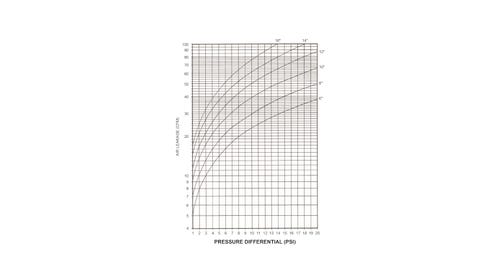
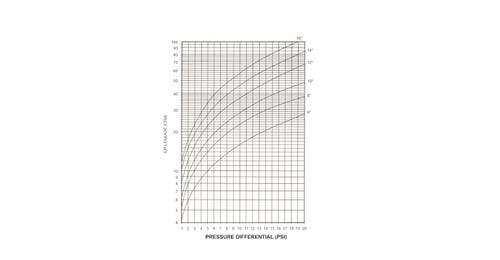
Insert Figure 3: Eight-blade and 10-blade rotor graphs
Looking at Figure 3, we can get an appreciation for gas leaking through the valve at a given pressure differential. From the charts we can compare different sizes of valves and compare an eight-blade versus a 10-blade rotor. It is easy to see that at a higher pressure differential, a larger valve with less blades results in increased gas leakage.
For example:
* 10-in. rotor
o 8-blade rotor - 24 cfm@5 psi or 45 cfm@12 psi
o 10-blade rotor - 17 cfm @5 psi or 33 cfm@12 psi
* Eight-in. rotor
o Eight-blade rotor - 18 cfm@5 psi or 34 cfm@12 psi
o 10-blade rotor - 14 cfm@5 psi or 26 cfm@12 psi
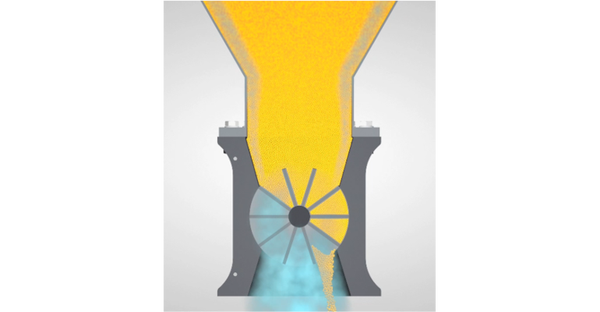
Figure 4: Rotary valve without leakage gas venting
In a pneumatic conveying system--pressure or vacuum--this leakage must be considered in calculating the proper sizing of the system. If there are more than two rotary valves feeding into a line, a shutoff gate above is recommended to stop the leakage when not running.

Insert Figure 5: Built-in vent to release leakage gas
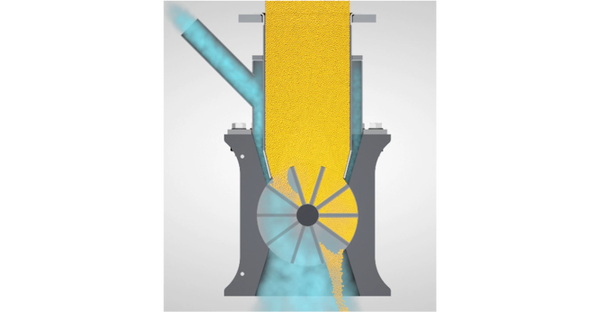
Insert Figure 6: Rotary valve with leakage gas collector
Leakage Gas Venting
There are a few ways to mitigate the leakage gas in the rotary valve, besides optimization of material and design. Figure 4 shows a typical pellet application where the air vents up through the pellets and has little effect on the operation. Figure 5 shows an example of a vent built into the rotary valve housing for pellets and granular materials. This reduces the overall stack-up height as compared to a leakage gas collector. Figure 6 shows a leakage gas collector which vents the gas and reduces its impact on the valve rate. Lastly, two valves could be stacked on top of each other. This would reduce the leakage by approximately half. It is the most expensive option and also has the largest impact on stack-up height. The bottom rotary valve would need to run slightly faster than the top to ensure the material does not back up.
Conclusion on Minimizing Rotary Valve Leakage
Air leakage in a rotary valve is unavoidable. Set clearances are included by design but if air leakage is not maintained and exceeds the manufactures recommendations, operating problems will occur and, most likely, the valve will ultimately fail. It is important for processors to understand what can influence the potential for air leakage, such as material properties, valve size, plant gas quality, environmental factors, and even the valve’s material of construction. Consult with your valve manufacturer or system supplier to determine best practices to minimize air leakage of your rotary valve, whether you are designing a new application or improving an existing application.
Matt Burt is director of sales – components, and Ron Van Ostenbridge is junior business development manager – components, Coperion K-Tron. Coperion is an international market and technology leader in compounding and extrusion systems, feeding and weighing technology, bulk materials handling systems, and services. Coperion designs, develops, manufactures and maintains systems, machines, and components for the plastics, chemicals, pharmaceutical, food, and minerals industries. For more information visit www.coperion.com or email [email protected].
You May Also Like


